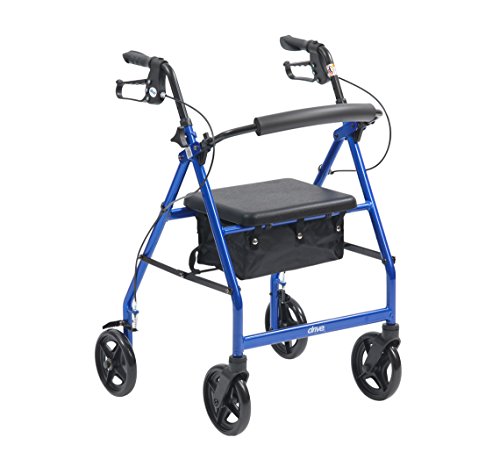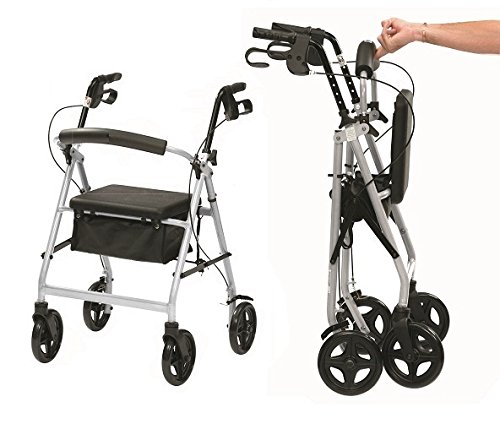Locking Mechanism For Use With a Foldable Rollator
Nearly all rollators come with an element of locking or latch to stop the rollators from being rolled out during storage. This is crucial to ensure security and to avoid a dangerous situation during transport.
The lock is located in the middle of the frame. It could be a button or lever. It is important to understand how to make use of this feature.
How to fold a
rollator walker foldingRollators are extremely efficient mobility aids designed for those who need support and stability when walking. Rollators are lightweight, practical and are available in a range of models that can be adapted to various budgets and requirements. Some people may be worried about how to safely fold and unfold a rolling walker.
Luckily, many modern rollators are built with easy-to-use folding mechanisms. The walkers fold quickly without the use of any tools. This makes them ideal for transportation and storage. The locking mechanism ensures that the walker won't open up when it's being transported or stored, providing users with security and safety.
In addition to simple folding mechanisms modern walkers feature ergonomic designs to ensure safety and comfort for the user. For example, they have comfortable handles, a large basket, and a brake lever built-in to avoid accidental activation. They are also constructed of lightweight materials to allow for easy handling.
Traditional rollators however are heavier and can't fold themselves making them difficult to store or transport. Seats are connected to the frame and can't be placed in tight spaces or against objects. Therefore, it is essential for those who use the rollator to understand how to fold their walkers in order for easier storage and
transport rollator.
The first step in folding a
lightest rollator is to find the locking mechanism, which is usually found near the center of the device's frame. Once you have located it and lift it gently, or release it according to the instructions provided by the manufacturer. After the locking mechanism is removed you can fold your walker by pressing the sides in tandem while holding the releases. Continue to do this until the walker is fully folded and securely locked.
In addition to checking that the lock is in place, you should also inspect your walker for loose components and indications of damage or wear. Repair any issues immediately to prevent further injuries or damage. In addition, it is recommended to lubricate regularly all moving parts of the walker in order to reduce friction and ensure the smooth operation.
The Crossbar
The crossbar is the central bar which supports a
Rollator Walkers For Seniors's frame and wheels. It's typically made of metal and connects the handlebars to the frame's base. The crossbar adds strength and stability and holds the walker's basket and other attachments. Many manufacturers offer additional accessories, like baskets for storage and totes, for their walker model. They can be affixed to the front or back of the walker, or they can be placed under the seat.
Many models of walker have a crossbar that folds two directions, making them much easier to carry and store. This is a significant feature, particularly in the event that the walker will be frequently used for travel or long journeys to the grocery store or other places. Additionally, some models of walkers include a carry bag that can be used for storage space.
Another key characteristic of a rollator is the brakes, which are normally situated on the handle or crossbar. There are various kinds of brake systems available, including push-down and cable loop. The brakes that are push-down require the user to apply downward pressure to the spring-loaded frame to stop the walker from rolling. This type of system is not suitable for smaller users who struggle to activate the breaks or heavier users who may accidentally activate the brakes.
The cable loop brake is more like the brakes of bicycles. It can be activated by pressing the handlebars and levers simultaneously with both hands. This type of brake system is better suitable for those with limited hand movement, and gives more control than brakes that push down.
Crossbar can also be used to describe one vertical stroke that crosses between two other strokes in an alphabet. The length, thickness and position of a crossbar may affect the readability of a letterform and is a major distinction between serif and non-serif fonts. The crossbar that is on the small letter e is often referred to as an arm.
The Release Mechanisms
Rollators play an essential role in increasing mobility and empowering users facing physical challenges. This unique stability device helps distribute the weight evenly across the user's lower body, reducing stress on joints and muscles that allow for comfortable and effortless movement. These mobility aids are equipped with features that are customizable, including brakes and handlebars that can be adjusted as well as built-in seating and storage compartments. They let users navigate their surroundings in comfort and with confidence. Additionally, these light and portable mobility aids are usually covered by Medicare or Medicaid to aid in affordability.

Carbon rollators are much easier to transport and store than traditional walkers. They fold in half and can be placed in the trunk. To do so, remove the basket and then pull up on the crossbar to expose a pair of release mechanisms on either side of the frame. Then, press the release mechanisms and push the sides of the frame until the walking device shrinks to its smaller size.
The locking assembly is connected to a top support arm that is largely horizontal, 218 which joins two rear and front tubular legs that are vertical. Telescoping tubular leg extension 226 and 228 are releasably attached to the ends of the front and rear tubular legs. Telescoping extensions can be moved between an unlocked or locked position to adjust the height of the rolling aid.
After the leg segments of the extension are in the correct place, a nonsliding handle is positioned at the lever's end. The actuating lever is attached to the housing via an extension piece that extends out from the frame. It also has an recessed piece that is sized to accept the extension piece. The extension piece and the recessed portion provide an angle around which the actuating lever can be rotated.
When the telescoping legs segments are in the right position, the locking mechanisms engages a snap-button and biasing spring. This arrangement allows the user to easily engage or detach the folding mechanism, allowing for a simple storage and transport of the walking aid.
The Locking Mechanism
The present invention is the locking mechanism that can be used with a foldable rollator or walker. The invention addresses a need to have a lock assembly designed for use with such walkers and rollators that is easy to configure between folded and unfolded positions for those who have limited mobility.

 Carbon rollators are much easier to transport and store than traditional walkers. They fold in half and can be placed in the trunk. To do so, remove the basket and then pull up on the crossbar to expose a pair of release mechanisms on either side of the frame. Then, press the release mechanisms and push the sides of the frame until the walking device shrinks to its smaller size.
Carbon rollators are much easier to transport and store than traditional walkers. They fold in half and can be placed in the trunk. To do so, remove the basket and then pull up on the crossbar to expose a pair of release mechanisms on either side of the frame. Then, press the release mechanisms and push the sides of the frame until the walking device shrinks to its smaller size.